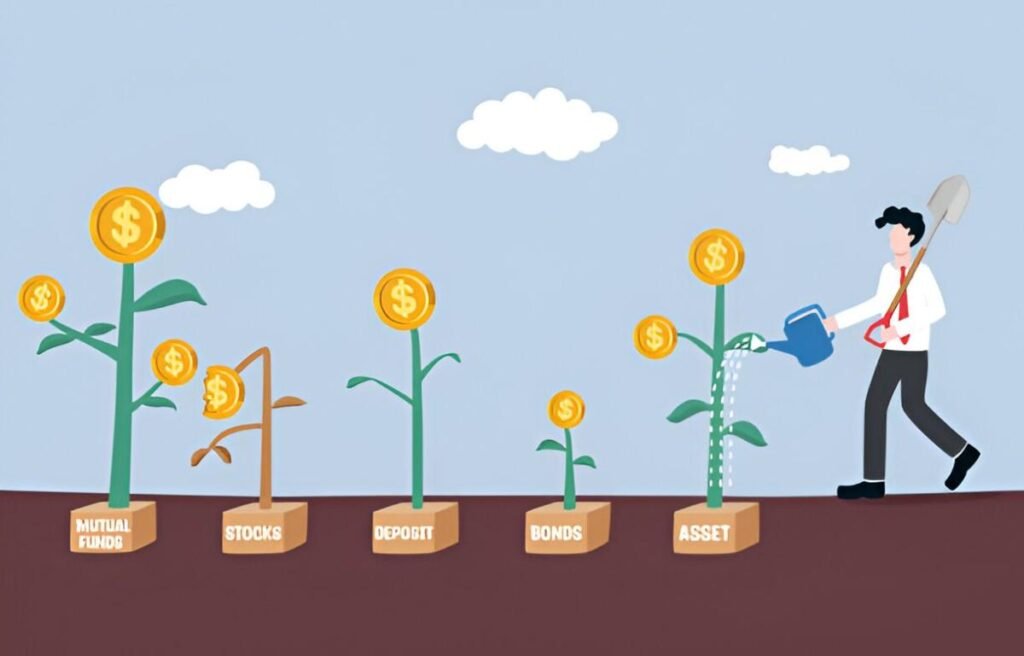As a finance and investment expert, I often get asked how to construct a portfolio that targets aggressive growth without exposing investors to unnecessary risks. The answer lies in strategic asset allocation, a disciplined approach that balances risk and reward by diversifying across high-growth asset classes. In this article, I break down the principles of aggressive growth asset allocation, the key investment vehicles to consider, and the mathematical frameworks that support this strategy.
Table of Contents
Understanding Aggressive Growth Asset Allocation
Aggressive growth asset allocation focuses on maximizing long-term capital appreciation by investing in high-risk, high-reward assets. Unlike conservative portfolios that prioritize stability, an aggressive growth strategy leans heavily into equities, alternative investments, and emerging markets.
Key Characteristics of an Aggressive Growth Portfolio
- High Equity Exposure (80-100%): Stocks, particularly growth and small-cap stocks, dominate.
- Minimal Fixed Income (0-10%): Bonds play a minimal role since they offer lower returns.
- Alternative Investments (10-20%): Private equity, venture capital, and cryptocurrencies may be included.
- Geographical Diversification: Exposure to emerging markets for higher growth potential.
The Mathematical Framework Behind Asset Allocation
To optimize an aggressive growth portfolio, I rely on modern portfolio theory (MPT) introduced by Harry Markowitz. The core idea is to maximize expected return for a given level of risk.
Expected Return Calculation
The expected return E(R_p) of a portfolio is the weighted sum of individual asset returns:
E(R_p) = \sum_{i=1}^{n} w_i E(R_i)Where:
- w_i = weight of asset i in the portfolio
- E(R_i) = expected return of asset i
Risk Measurement (Standard Deviation)
Portfolio risk is measured by standard deviation \sigma_p:
\sigma_p = \sqrt{\sum_{i=1}^{n} \sum_{j=1}^{n} w_i w_j \sigma_i \sigma_j \rho_{ij}}Where:
- \sigma_i, \sigma_j = standard deviations of assets i and j
- \rho_{ij} = correlation coefficient between assets i and j
Sharpe Ratio for Performance Evaluation
The Sharpe ratio helps assess risk-adjusted returns:
S_p = \frac{E(R_p) - R_f}{\sigma_p}Where R_f is the risk-free rate.
Optimal Asset Classes for Aggressive Growth
1. U.S. Growth Stocks
Companies like Tesla, Amazon, and NVIDIA have historically delivered high returns. A growth-oriented investor should allocate a significant portion here.
2. Small-Cap Stocks
Small-cap stocks (e.g., Russell 2000 index) offer higher growth potential but come with increased volatility.
3. Emerging Markets
Countries like India and Vietnam present growth opportunities but carry geopolitical and currency risks.
4. Technology and Innovation ETFs
Sectors like AI, blockchain, and biotech are prime candidates for aggressive growth.
5. Alternative Investments
- Cryptocurrencies (Bitcoin, Ethereum)
- Private Equity & Venture Capital
A Sample Aggressive Growth Portfolio
| Asset Class | Allocation (%) | Expected Return (%) | Risk (Std Dev) |
|---|---|---|---|
| U.S. Large-Cap Growth | 40 | 12 | 18 |
| U.S. Small-Cap | 20 | 15 | 25 |
| Emerging Markets | 20 | 14 | 22 |
| Tech ETFs | 10 | 16 | 20 |
| Cryptocurrencies | 10 | 30 | 60 |
Expected Portfolio Return Calculation
Using the weighted return formula:
E(R_p) = (0.40 \times 12) + (0.20 \times 15) + (0.20 \times 14) + (0.10 \times 16) + (0.10 \times 30) = 14.8\%Risk Management in Aggressive Portfolios
While chasing high returns, risk management is critical. I recommend:
- Rebalancing Quarterly: Ensures allocations stay aligned with goals.
- Using Stop-Loss Orders: Limits downside risk.
- Diversifying Across Sectors: Avoids overexposure to a single industry.
Behavioral Considerations
Investors often make emotional decisions during market swings. A disciplined approach prevents panic selling during downturns. Historical data shows that staying invested in growth assets yields better long-term results.
Final Thoughts
Aggressive growth asset allocation is not for everyone. It suits investors with a high-risk tolerance and a long time horizon. By leveraging mathematical models, diversifying smartly, and staying disciplined, one can maximize returns while managing risk effectively.




